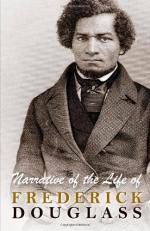|
This section contains 276 words (approx. 1 page at 400 words per page) |

|
Narrative of the Life of Frederick Douglass, an American Slave, Written by Himself Summary & Study Guide Description
Narrative of the Life of Frederick Douglass, an American Slave, Written by Himself Summary & Study Guide includes comprehensive information and analysis to help you understand the book. This study guide contains the following sections:
This detailed literature summary also contains Bibliography and a Free Quiz on Narrative of the Life of Frederick Douglass, an American Slave, Written by Himself by Frederick Douglass.
In 1838, at the age of twenty, Frederick Douglass escaped slavery and settled in the North. He quickly became involved in the campaign against slavery, known as the abolitionist movement. Seven years later in 1845, he published the Narrative of the Life of Frederick Douglass, An American Slave, Written by Himself, in which he told the story of his life under slavery. His moving account of slavery and his eventual escape lent a certain authenticity to Douglass' speeches and writings against institutionalized slavery that white abolitionists did not have. His use of vivid language in depicting violence against slaves, his psychological insights into the power dynamics between slaves and slaveholders, and his naming of specific persons and places made his book a powerful indictment against a society (both in the North and South of the United States) that continued to condone slavery as a viable social and economic institution.
More than a story about the evils of slavery, the Narrative touches on basic issues and themes important to all Americans. These include the value of freedom, social justice and equal rights, and condemnation of violence against those who do not have the legal power to protect themselves. Written in a lucid and passionate style, the Narrative uses a variety of rhetorical and literary devices. Teachers use it as an example of a historical document and a literary work. The Narrative has taken its place in the American literary canon as a precursor of a rich tradition of African-American autobiographical works, from Richard Wright's Black Boy to Malcolm X's (with Alex Haley) The Autobiography of Malcolm X and Maya Angelou's I Know Why the Caged Bird Sings.
Read more from the Study Guide
|
This section contains 276 words (approx. 1 page at 400 words per page) |

|



